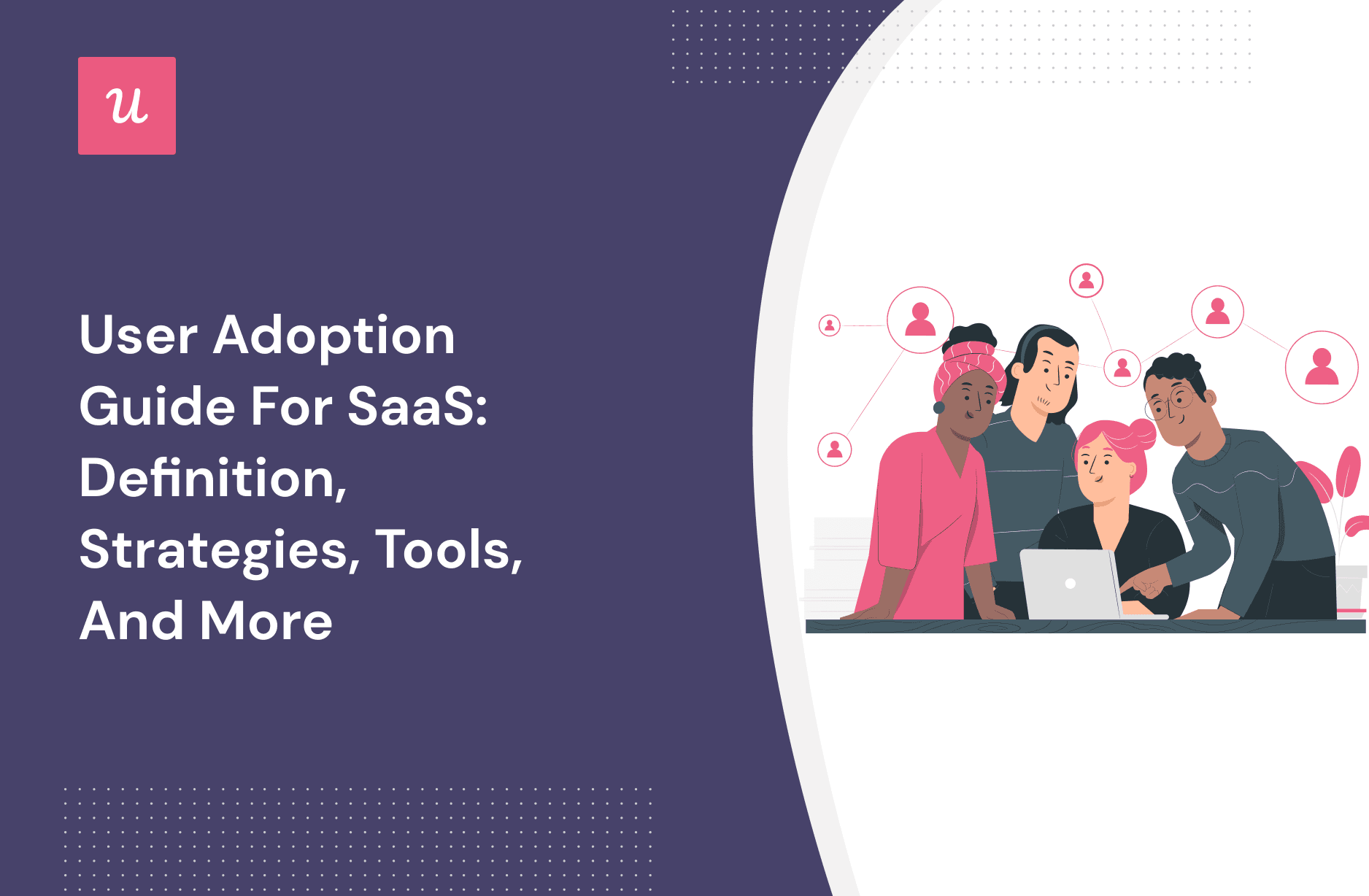
User adoption is essential for B2B SaaS companies, as it helps customers to learn about your product, adopt features, stick around, and nurture product growth.
But how does user adoption impact your business? And your role at a customer success team?
In this post, we’ll clarify what user adoption is, explain the best practices, and share some tools you can leverage to make a bigger impact in your job.
Try Userpilot Now
See Why 1,000+ Teams Choose Userpilot

What is user adoption?
User adoption is the journey in which a customer becomes a regular user of your product and makes it part of their life. It starts from the moment a user has their AHA moment and continues until they become brand advocates.
Why is user adoption important?
For any SaaS company, user adoption is indispensable for product growth.
The reason is simple: more adoption means more MRR.
Plus, this isn’t the only benefit of achieving high user adoption rates. There are more:
- Successful user adoption leads to an increased free-to-paid conversion rate.
- A great user adoption experience will lower churn rates and boost customer retention.
- When users make your product part of their life, it inevitably increases customer lifetime value.
- A frictionless adoption process converts customers into loyal customers who promote your brand through word of mouth.
Now, given these benefits, what makes the user adoption process successful?
What are the phases of user adoption?
You see, adoption isn’t a set-and-forget process—especially for SaaS businesses.
Since your product is in constant development, your users need to continuously catch up with the newest features, updates, and workflows.
So, the adoption process is divided into four main stages:
- New users reach the “AHA” moment. The first time a new user properly understands the value of your product. Then actually decides to experience it for themselves.
- Users adopt key features and become paying customers. Users repeatedly engage with core features, experience its benefits, and decide if your product is worth paying for to keep using.
- Customers expand their usage of your product and invest in upsells. The stage where customers start expanding their product usage and you start upselling upgrades—leading to account expansion.
- Customers become brand advocates. Customers use your product every day and share it with their network, bringing you more referrals.

How to measure user adoption success
You might be thinking that your user adoption process is good enough. But what’s the threshold for it being “pretty good”?
You see, user adoption can always be improved. And to do so, you need to measure it.
That’s why we’re bringing you four metrics you track to start improving your adoption process:
User activation rate
The activation rate is the percentage of signed-up users who reached an activation milestone, which could involve engaging with a core feature, adding teammates, receiving the first payment, etc.
Here’s the formula:
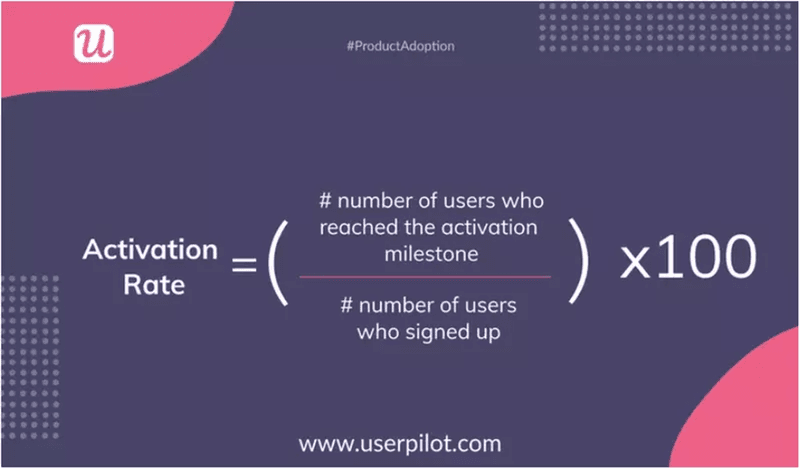
Feature adoption rate
The feature adoption rate measures the percentage of active users (MAUs) who engage with a particular feature of your product. It can tell you which tools are used more, so you can discern which ones provide more value.
It’s calculated by dividing the number of users who engage with a product by the total user logins from that period.
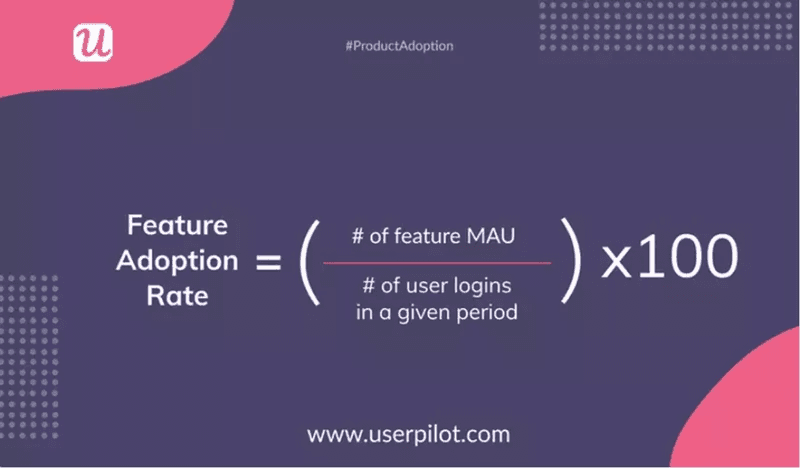
Product stickiness metric
Product stickiness refers to the tendency of users to keep returning to your app because it’s engaging and valuable to them. It measures repeat usage.
You can track stickiness by calculating your DAU to MAU ratio:
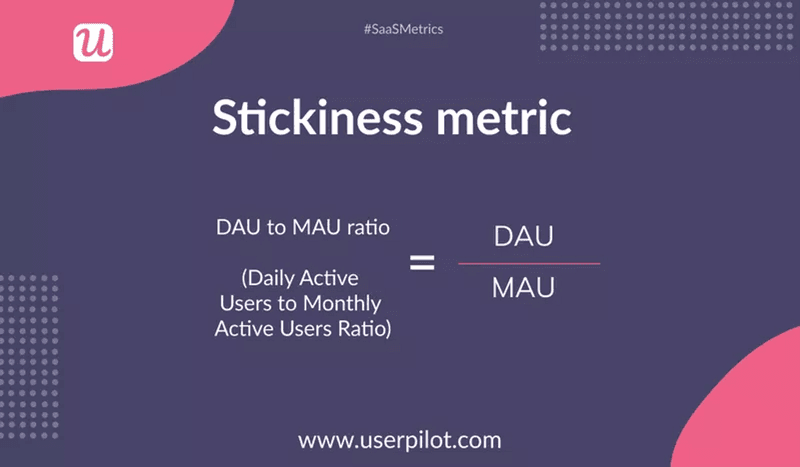
Net promoter score
The Net Promoter Score (NPS) is a metric that measures the likelihood of a customer recommending your product or service to others.
It asks users how likely they are to recommend your product or service to others on a scale from 1 to 10. Where 0 means “Not Likely” and ten means “Extremely Likely.” It can correlate with your user adoption success if you’re getting a lot of 9s and 10s.
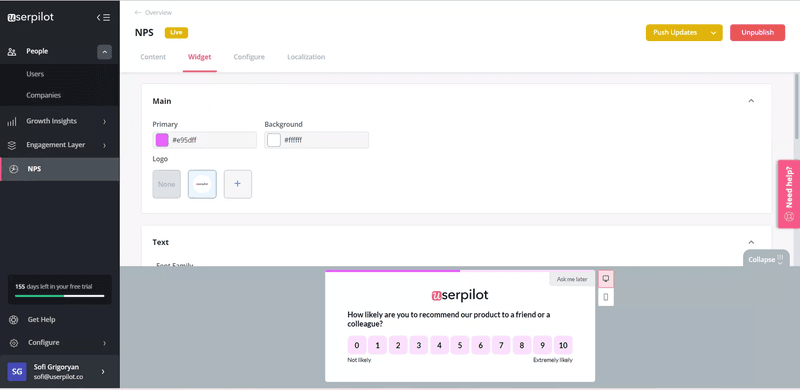
How to build a good user adoption strategy
If you’re clueless about the adoption process in your company. Then you need to build an effective user adoption strategy that works.
Here are our four steps to get started:
1. Define your target personas and their jobs to be done
First, you can’t design a great product without knowing your users.
Therefore, you need to perform user research (interviews, surveys, etc.) to understand who your ideal customers are, what problem they’re trying to solve, and for what use case they’re using your product.
Once you have collected enough data, you can create a detailed user persona (like the example below), which will become fundamental to your user adoption strategy.
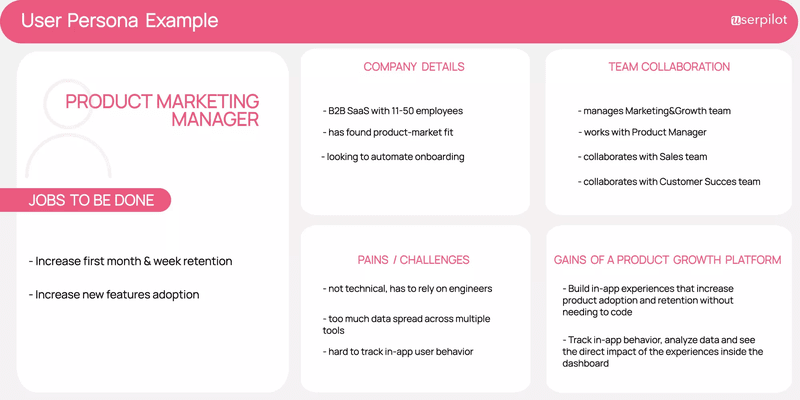
2. Map your customer journey
After creating a complete user persona that isn’t based on assumptions, create a customer success journey map.
For this, visualize the entire user journey on a map, and include every touchpoint, action, opportunity, and ownership for each phase, like in the image below.
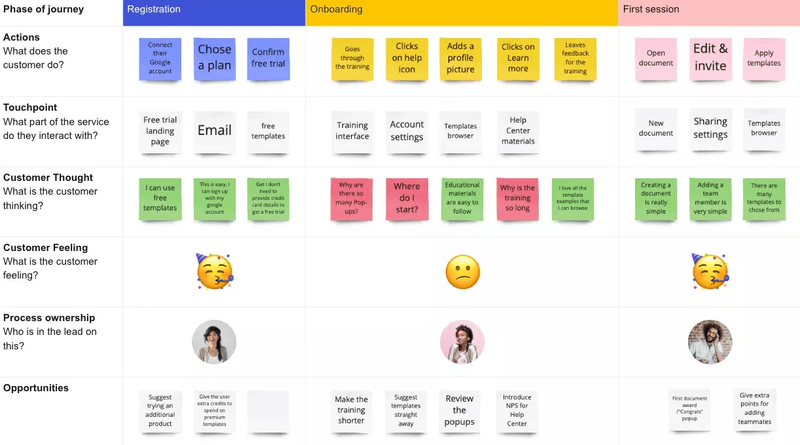
3. Create a customer success playbook
With every journey stage visualized, create an onboarding playbook following these three steps:
- Choose the stage of the journey you want to focus on.
- Define the definition of success at that particular stage (from your user’s point of view).
- Determine the tactics and steps that must be followed to achieve that goal.
Here’s an example:
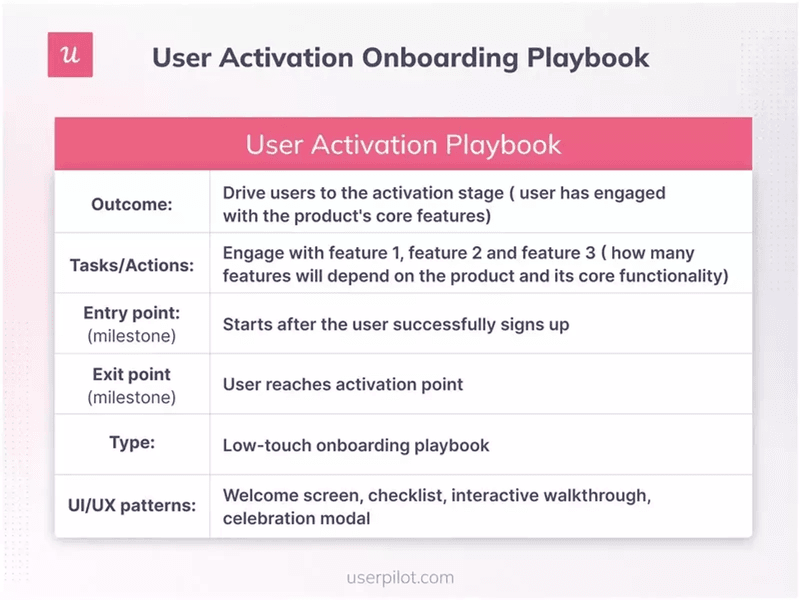
4. Continuously measure and improve
After following your customer onboarding playbook for a while, you want to ensure they actually work.
Therefore, it’s essential to analyze product data to spot what parts of the user adoption process are lacking and reduce adoption friction.
For instance, you can see if your user base is struggling to adopt a specific feature or achieve a milestone and then adjust your playbook accordingly (and repeat all the steps if necessary).
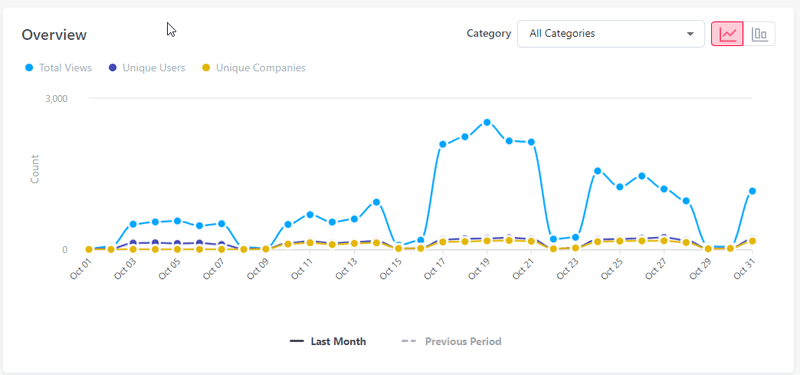
How to improve user adoption
Your user adoption strategy is not a set-and-forget thing. It’s a never-ending process in which you must continuously find ways to improve it.
For this reason, we share 10 of the most important customer success practices to improve user adoption:
Personalize the user experience from the start
A personalized onboarding experience is essential to engage users right from the beginning.
But personalization can’t be lazy. A truly personalized product experience delivers value according to your customer’s use case, job to be done (JTBD), and the journey stage—helping users achieve their goals more easily and faster.
For this, you need to start collecting user data during the sign-up process. For example, with a welcome screen like this example from Postify:
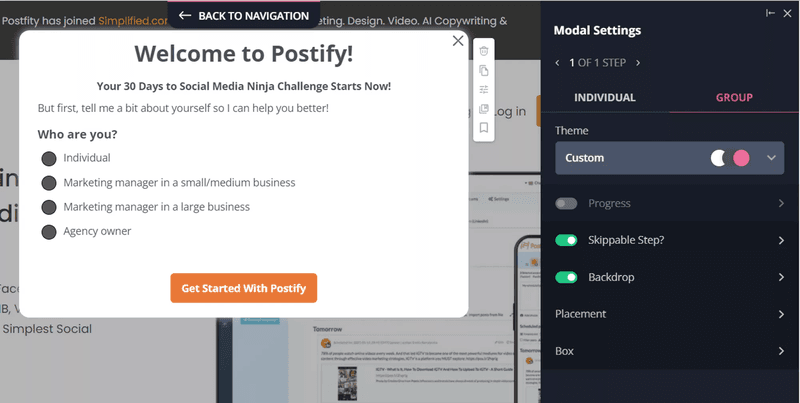
Once you have enough data, you can segment your user base and personalize the product experience to smooth the user adoption process.
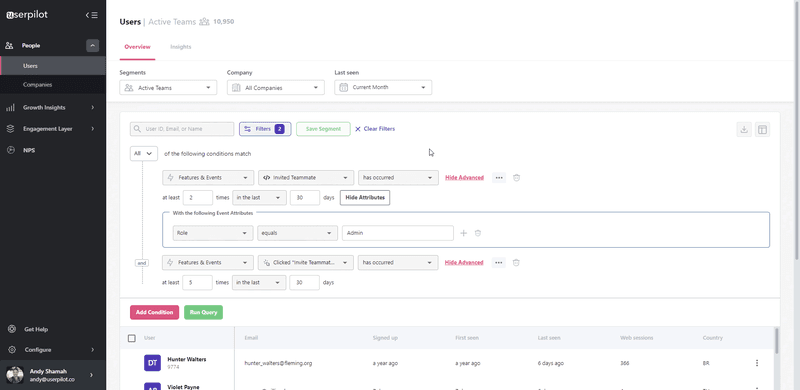
Use checklists to drive users toward key actions
When you build an adoption strategy, you’ve already pin-downed your activation criteria and defined the steps required to achieve it.
The challenge is to help users reach this stage as soon as possible, or there’s a high chance they won’t return.
So, compile the tasks required for activation and implement an onboarding checklist (like in the screenshot below) that every user needs to follow in order to reach it. This way, you incentivize new users to complete these tasks and nurture long-term user adoption.
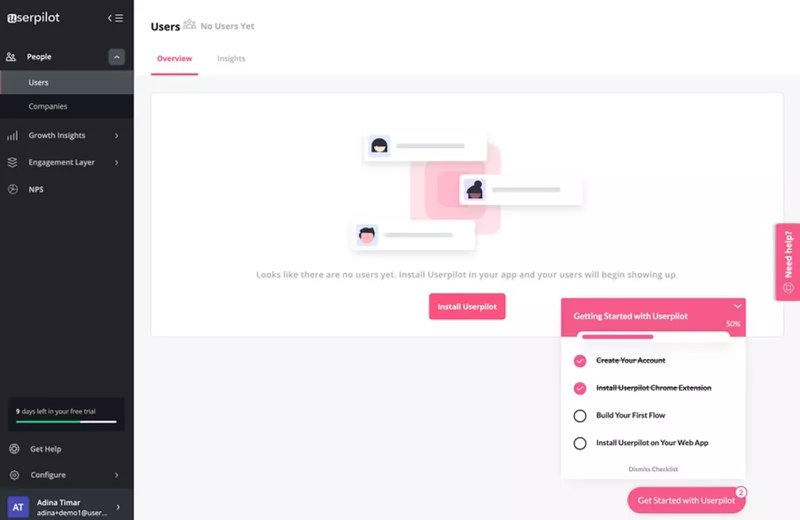
Replace generic product tours with interactive walkthroughs
Unlike the generic and overwhelming product tours that everyone skips, interactive walkthroughs introduce the product one feature at a time and in an interactive way.
So if you’re worried that your users are mindlessly clicking “next” to skip your product tour, try interactive walkthroughs instead to ease the learning curve and help users adopt the product quickly.
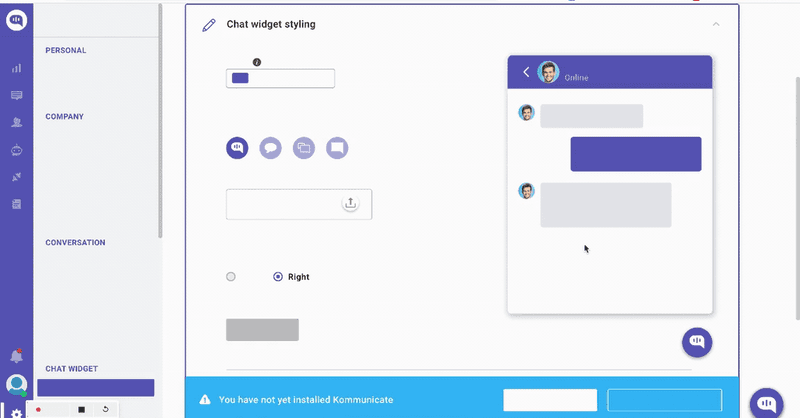
Accelerate adoption with in-app video tutorials
Do you know what’s better than walkthroughs? Video walkthroughs.
Videos are easier to follow and replicate than words—making the learning experience more engaging and frictionless (especially for complex apps).
So if you have the time to produce onboarding videos, you can use a user adoption tool (like Userpilot) to embed video tutorials inside modals or tooltips and enhance your interactive walkthroughs.
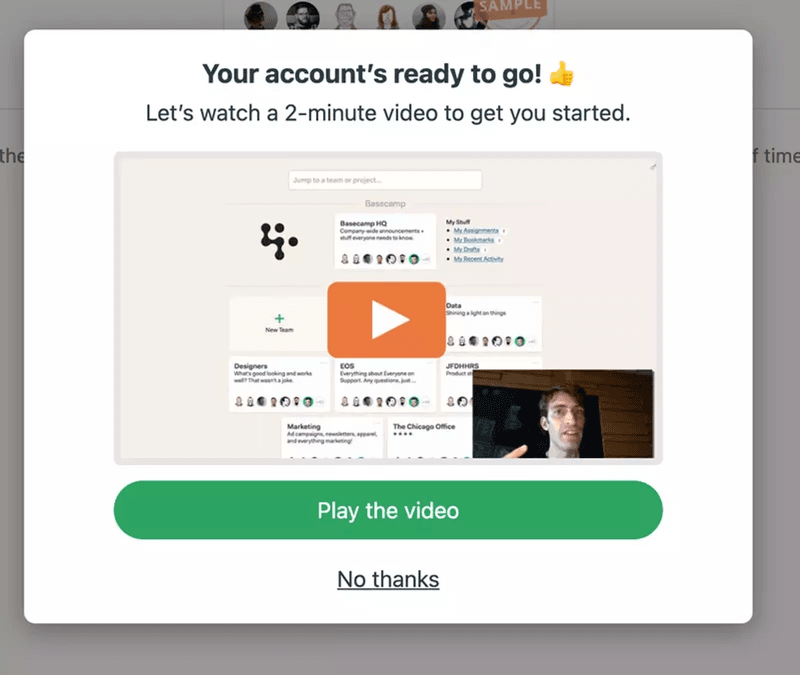
Incentivize engagement to encourage repeat product usage
An engagement loop is an experience that motivates users to take action and continues to provide positive reinforcement to incentivize them to repeat a task.
With gamification, you can add elements such as badges, points, and levels for a nicer user adoption experience. Creating a positive loop in the user that hypes them up during their path to success.
For example, Asana’s unicorn animation appears every time you complete a task, which reinforces a positive behavior with a dopamine hit, encourages repeated engagement with your app, and drives better adoption.
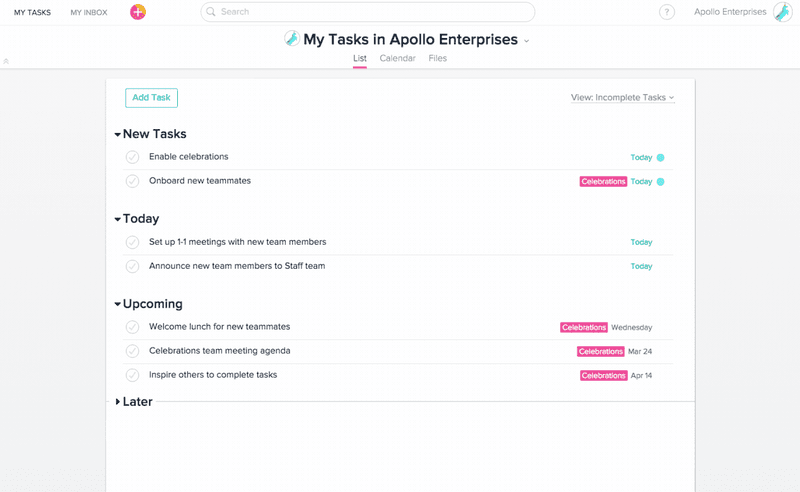
Create self-service options
User adoption requires balance. You can’t always be there for your users, as they need space to move at their own pace too.
But since such freedom can lead users to face an obstacle, you need to have the answers ready in a self-service portal.
For this, embed an in-app knowledge base where users can search for any resource they need, such as articles, video guides, FAQs, and support—without ever leaving your app.
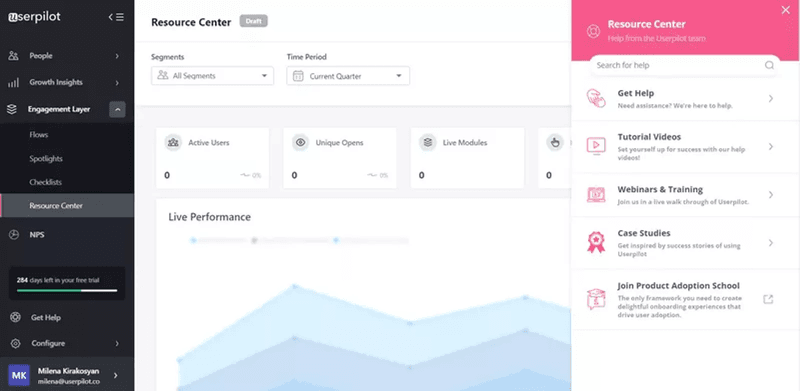
Offer additional guidance and education with webinars
Some products are more complex and have a steep learning curve.
And although people have different learning rhythms (and most SaaS users are satisfied with self-service options), companies with these products often need to offer white-glove onboarding so their customers can properly adopt their app.
For advanced tools, face-to-face webinars are a great way to complement onboarding, as it allows users to adopt more complex features and achieve milestones without requiring high-touch customer service.
And to do so, make sure to promote them inside your app so users can sign-up:
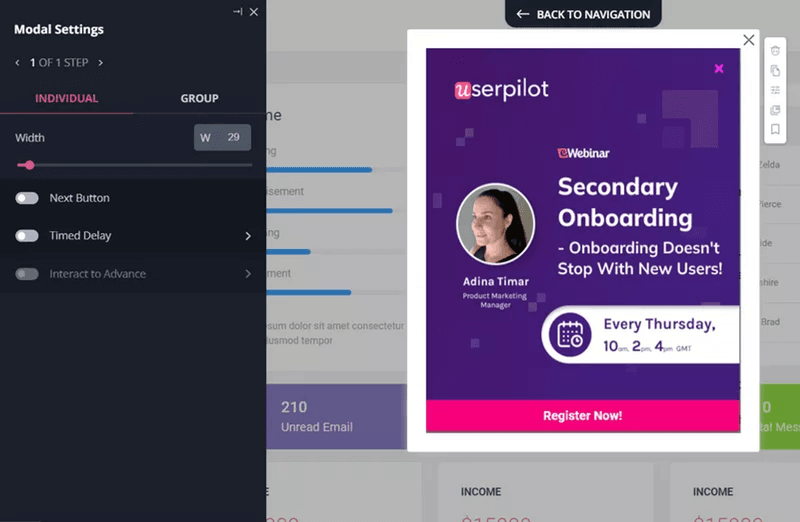
Keep tabs on at-risk users and offer support before it’s too late
Churn will always happen. Sometimes, customers are not a great fit for your product. But, they could also be unable to find value in your product and feel stuck—even when they’re active users.
So, it’s a good idea to consistently check your product usage numbers, such as the time they spend using it, the features they engage with, and the number of logins. This way, you can identify at-risk customers who may need personal help to realize the value of your product.
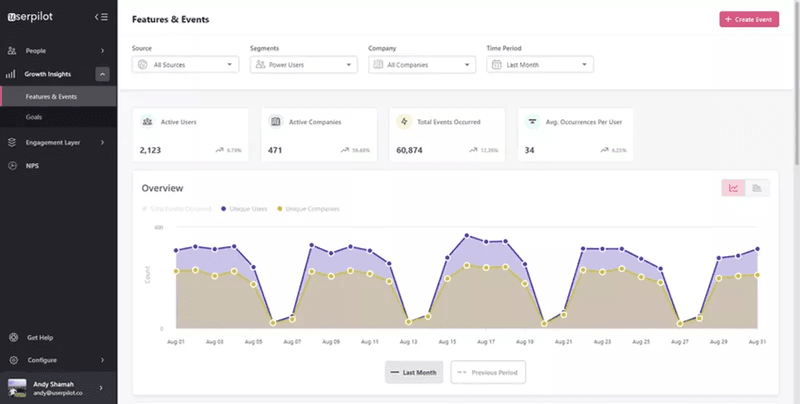
Once you’ve identified stuck users, you can try to re-engage them using personalized UI patterns like tooltips.
With this tactic, you can reintroduce a key feature your customers need to adopt to get their job done.
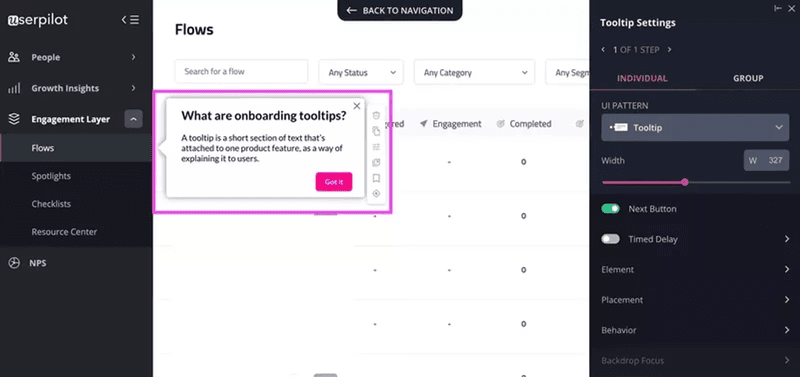
However, in-app guidance won’t do much for customers who barely log into your app. In these cases, it’s better to send a win-back email campaign to remind inactive users about the value of your product, share the latest news, and offer personal support if needed.
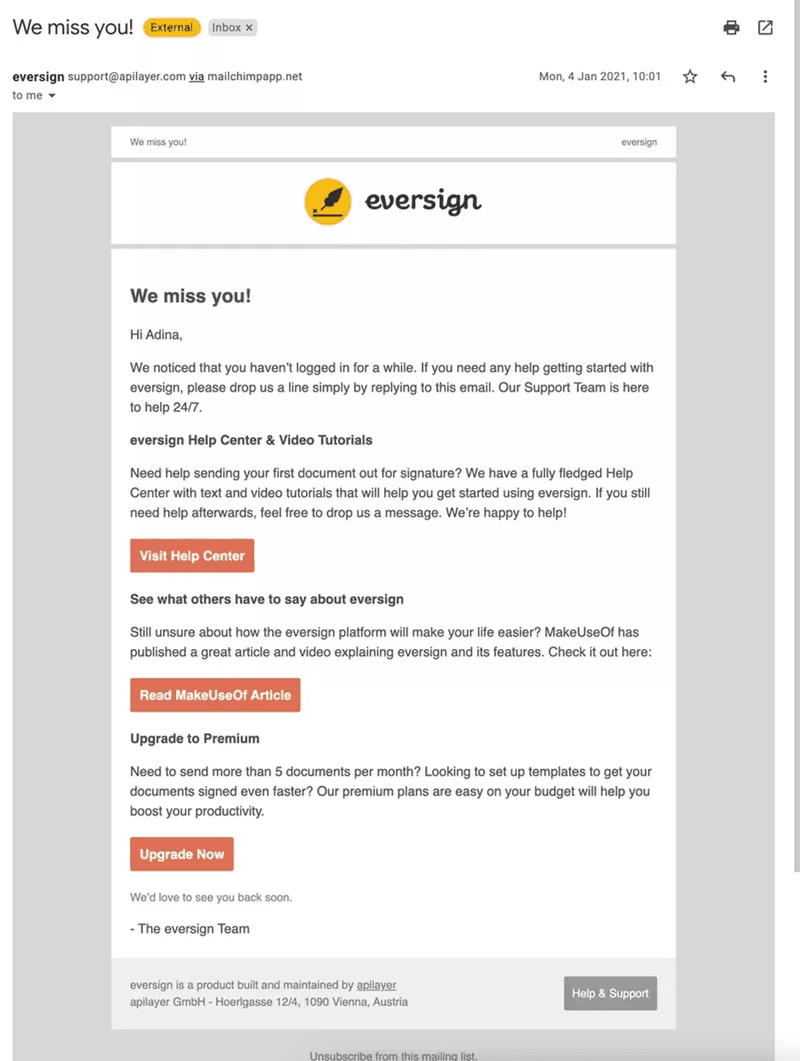
Don’t let feature blindness kill adoption—announce new features in-app
SaaS users are usually feature-blind. They’ll stick to their behavior patterns and workflows they’ve developed over time. They’ll easily miss out when new tools are live—even if you put them in front of them.
One way to overcome this problem is by communicating with new feature announcements. You can use a subtle tooltip for small changes or a nice modal when announcing bigger launches (like the screenshot below).
With hard-to-ignore announcements, you can get your user base’s attention, help them get started with new tools, and ultimately improve user adoption.
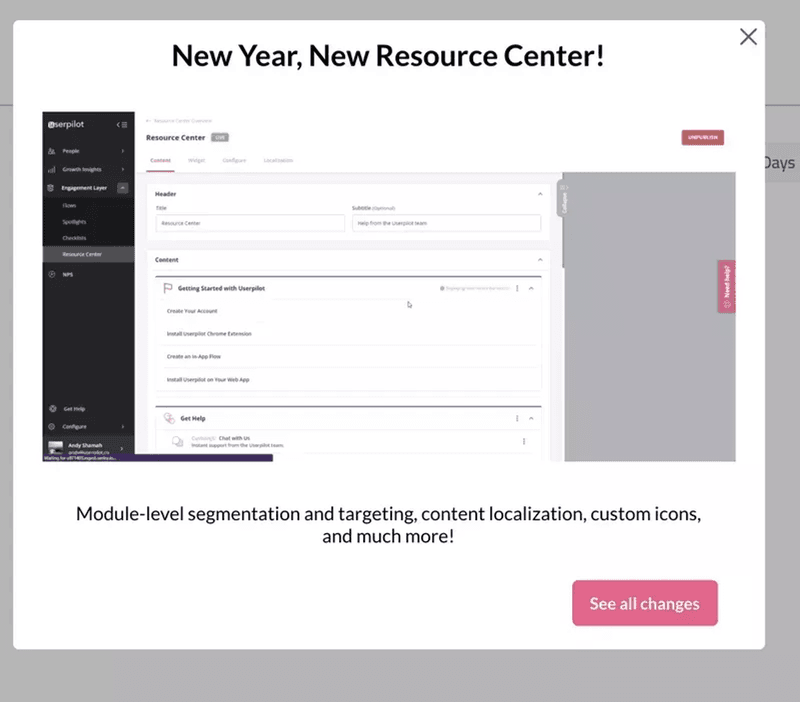
Improve based on customer feedback
Finally, the best tactic for improving user adoption is asking your existing users directly! After all, they’re the ones who experience it, not you.
Thankfully, you can automate customer feedback and trigger in-app surveys at different touchpoints to measure how your customers feel across the customer journey and find opportunities for improvement.
There are different types of surveys you can use, such as:
- Customer effort score surveys (CES). A survey that asks users how easy it is to use your app. It measures the effort a customer has to put in to interact with your product.
- Customer satisfaction surveys (CSAT). Which asks customers how satisfied they are with their experience and shows you the percentage of positive responses.
- Feature surveys. An in-app survey that asks users to submit their thoughts about a feature (that could be new, old, in development, etc.).
But it doesn’t stop there. To make sure your customers feel heard and realize the value of your brand, you must close the feedback loop by acting on it. For example, implementing a highly-requested feature, solving a common bug, integrating your product with other apps, etc. Then, of course, following up and updating customers on the changes.
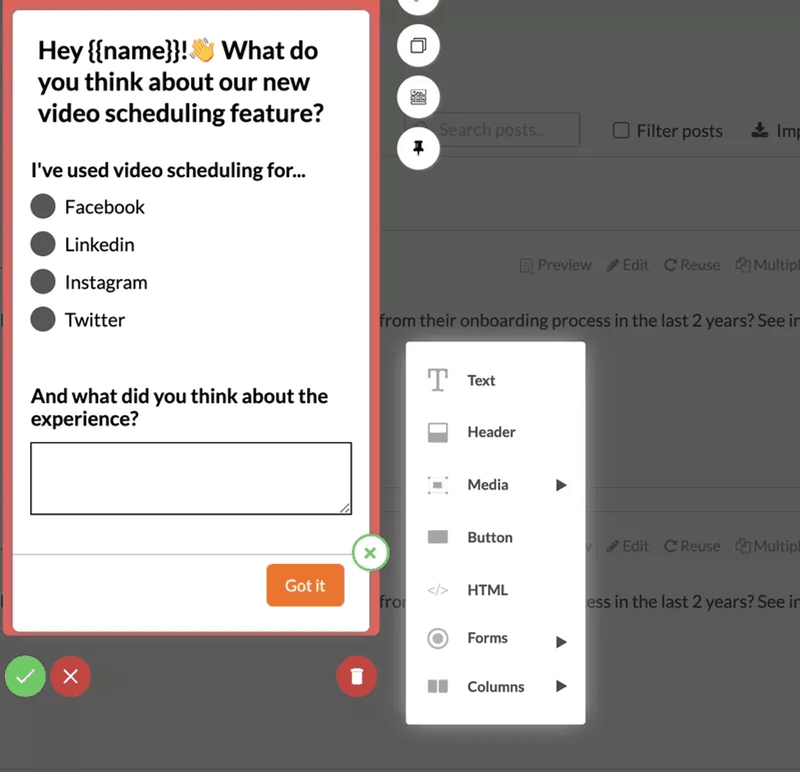
Best user adoption tools and software
You can build user adoption strategies and follow the best practices without any tool, but how many resources would it cost you?
Therefore, it’s highly recommended to use no-code apps that allow you to do all this without relying on your dev team and waiting for delivery.
Here are our two recommendations:
Userpilot – best digital adoption platform for SaaS
Userpilot is a product adoption platform that enables you to target users with contextual in-product experiences based on their persona or in-app behavior (without any code).
With Userpilot you can onboard and engage mobile app users by creating personalized messaging, push notifications, and surveys.
You can choose from various UI patterns for your adoption processes, such as modals, tooltips, slideouts, and banners.
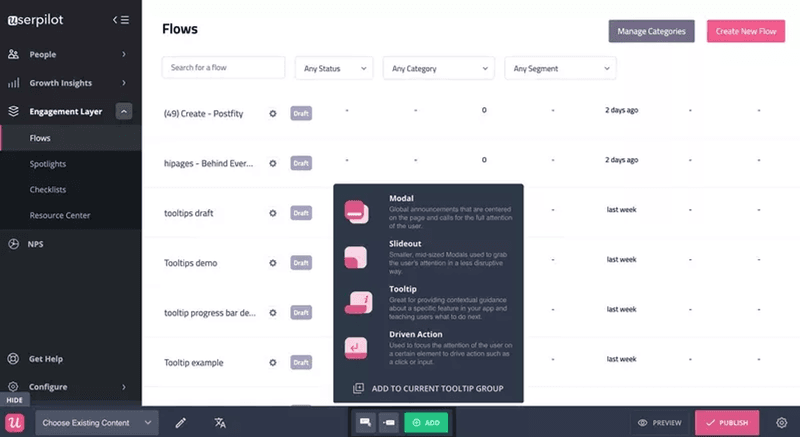
You can also track in-app events like clicks, hovers, and product usage, and combine them to create custom events. This allows you to analyze your user’s behavior and develop an improved adoption strategy.
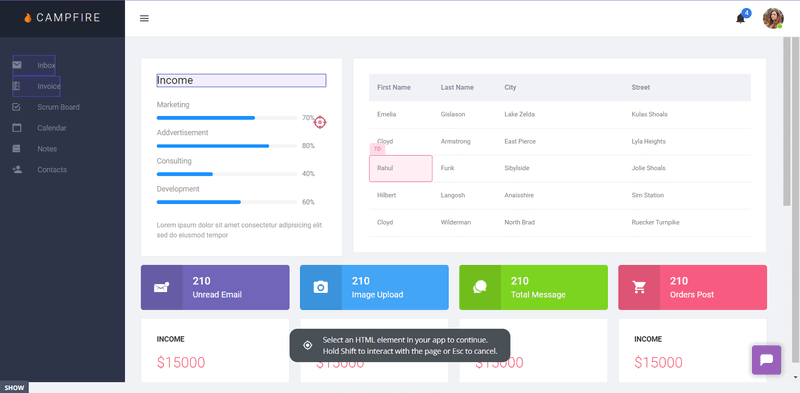
Pendo – best for driving mobile app adoption
Pendo is a robust product adoption platform with user engagement features, impressive analytics, and in-app feedback.
It caters mainly to the enterprise sector and has the most advanced analytics of all product adoption tools on the market.
Here are some of Pendo’s greatest perks:
- You can build your onboarding guides with a WYSIWYG (what-you-see-is-what-you-get) editor.
- Pendo’s analytics allow you to evaluate each feature usage and which features deliver the most value to every segment.
- Works across Android and iOS mobile apps, so Pendo is a great option if you’re looking to support your mobile customers through their onboarding.
- There’s a free plan that allows you to create guides, but you’ll only get access to limited features and basic analytics.
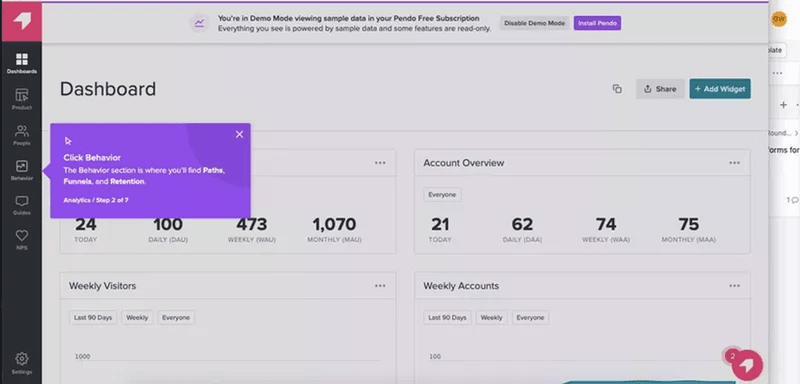
Wrapping up
In SaaS, user adoption is as important as acquiring new customers.
With this guide, you can hopefully build an adoption strategy and follow the best practices we explained.
So, instead of relying on the dev team to implement in-app experiences the way you want, why not try a Userpilot demo to see how you can improve adoption?






